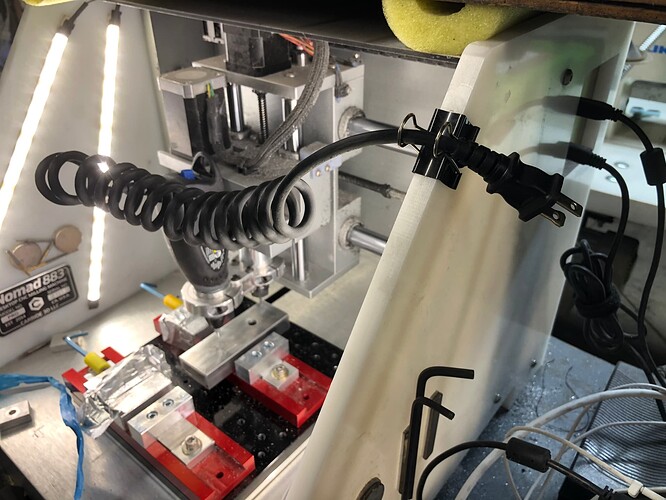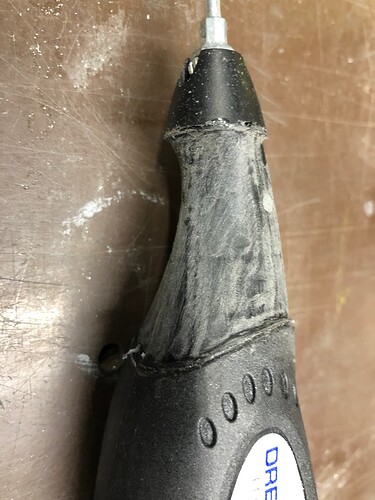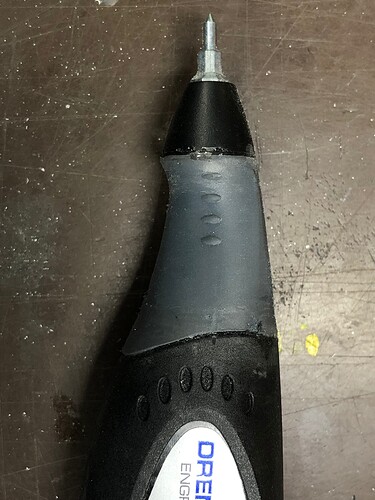The experiment above worked. Success to a point. I found a shortcoming of this prototype. It is a failure is gets worst every day. The Dremel’s PU (or whatever) foam ergonomic grip is working loose from the cast epoxy.
The Dremel is removed and the grey PU rubber skin must be removed. The easiest method was using my SOG Twitch pocket knife and whittle the grey off. A diamond file roughen the black plastic surface for the epoxy. So tonight I’ll cut another 1" long piece of 1-1/4" aluminum tubing and cast epoxy.
The epoxy will be cast against the housing plastic. Much better situation.
In working with this setup and getting familiar with it, here a few fun things about this:
- There must alway be an end mill in the Nomad’s chuck.
- I’ve set the height of the end mill 0.125" above the tip of the Dremel. This is an arbitrary number I used as a safe clearance to miss anything on the 8" x 8" mill table.
- The working area of the engraver will be 5.5"Y x 8"X.
- The stroke of the Dremel Engraver is 0.017".
- When OFF, the tip is retracted.
- When ON, the tip is fully extended.
- This means, the Engrave must be TURNED ON to find ZERO Z.
- I wound the engraver’s electric cord around 7/8" aluminum tubing, heated it with a heat gun, let it fully cool. Now engraver has a coiled cord. Then attached to Nomad’s side wall with a 32mm binder clip. This will relieve any pulling tension from cord.
- The detail of an engraved 0.001" deep line is amazing. It’s like a hair. Never was able to hand hold an engraver so close and steady.
Here’s a before and after photo of Dremel modification. Also coiled cord.


